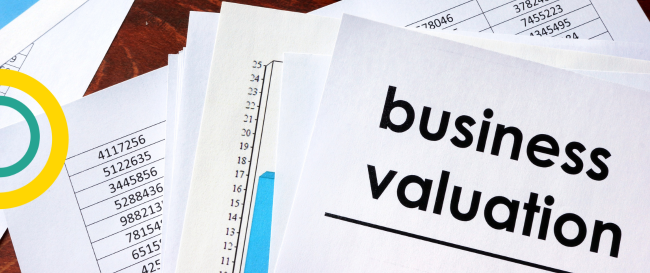In last week’s article, we considered how two popular investment valuations, namely the Price to Earning ratio as well as dividend yield work and when they are used. In this final article in our series on fundamental analysis, we will take a closer look at two more commonly used valuation metrics, namely the Return on Equity ratio and the Discounted Cash Flow method.
It is important to note that although only four valuations were discussed in this series, there are many more that investors use. These four valuations are however frequently used and referred to and are a good base to understand the role valuations play in the investment world.
Return on Equity (ROE)
The ROE is a financial ratio used to evaluate a company’s profitability and efficiency in generating profits from shareholders’ investments. It is calculated by dividing a company’s net income by its shareholder’s equity and is then expressed as a percentage.
Investors and analysts use the ROE ratio to evaluate a company’s financial health and its potential as an investment opportunity. A high ROE ratio suggests that a company is efficient in generating profits from the money invested by its shareholders. It indicates that the company is using its resources wisely to generate profits and is likely to be considered a good investment opportunity.
The ROE ratio can also be used to compare a company’s financial performance to other companies within the same industry or sector. Investors can use the ratio to identify companies that are generating higher returns on their investments compared to their peers.
However, it is important to note that a high ROE ratio alone does not necessarily mean that a company is a good investment opportunity. Other factors such as a company’s financial statements, management team, industry trends, and macroeconomic conditions should also be considered when evaluating its potential as an investment.
Let us consider a basic example to help better understand how this ratio is calculated. Suppose a company has a net income of R50 million and shareholder equity of R500 million. The ROE would be 10% (50/500), indicating that the company is generating a 10% return on shareholders’ equity.
Discount Cash Flow Method (DCF)
The DCF method is a valuation technique used by investors and analysts to estimate the intrinsic value of an investment based on its future cash flows. It involves estimating the future cash flows that an investment is expected to generate and discounting them back to their present value using a required rate of return.
It is particularly useful in situations where the investment generates predictable and stable cash flows over a long period, such as infrastructure projects, real estate developments, or mature companies with stable cash flows.
An important assumption and input used in this valuation calculation is the required rate of return (RRR) which is the minimum rate of return that an investor expects to receive for investing in a particular security or investment opportunity. The RRR will be determined by a few factors such as the investor’s opportunity cost and the level of risk associated with the investment.
The market interest rate is often used as a base to help an investor determine what the return will be should it have been invested in a savings account with the low risk associated with it.
Here’s an example of how DCF works:
Let us assume that you are evaluating an investment in a company that is expected to generate cash flows of R1,000,000 per year for the next five years. After five years, the company is expected to be sold for R5,000,000. To determine the present value of these future cash flows, you must discount them back to their present value.
Assuming a required rate of return of 10%, the present value of the cash flows can be calculated as follows:
Year 1: R1,000,000 / (1 + 10%) ^1 = R909,090.91
Year 2: R1,000,000 / (1 + 10%) ^2 = R826,446.28
Year 3: R1,000,000 / (1 + 10%) ^3 = R751,314.80
Year 4: R1,000,000 / (1 + 10%) ^4 = R683,013.45
Year 5: R1,000,000 / (1 + 10%) ^5 = R620,921.32
Sale proceeds: R5,000,000 / (1 + 10%)^5 = R3,104,606.62
Total present value = R909,090.91 + R826,446.28 + R751,314.80 + R683,013.45 + R620,921.32 + R3,104,606.62 = 6,895,393.38
The sum of all these present values gives the total present value of the investment’s future cash flows, which is R6,895,393.38 and represents the intrinsic value of the investment. If an investor buys this investment at any price lower than its intrinsic value, it may be considered a bargain as it is undervalued and vice versa.
It is clear that fundamental analysis is a crucial tool for investors to evaluate the financial health and intrinsic value of a company. It is however important to note that fundamental analysis is not foolproof and should be used in conjunction with other forms of analysis, such as technical analysis and market sentiment. Ultimately, successful investing requires a comprehensive approach that takes into account all relevant information and factors, and fundamental analysis is an important piece of the puzzle.









